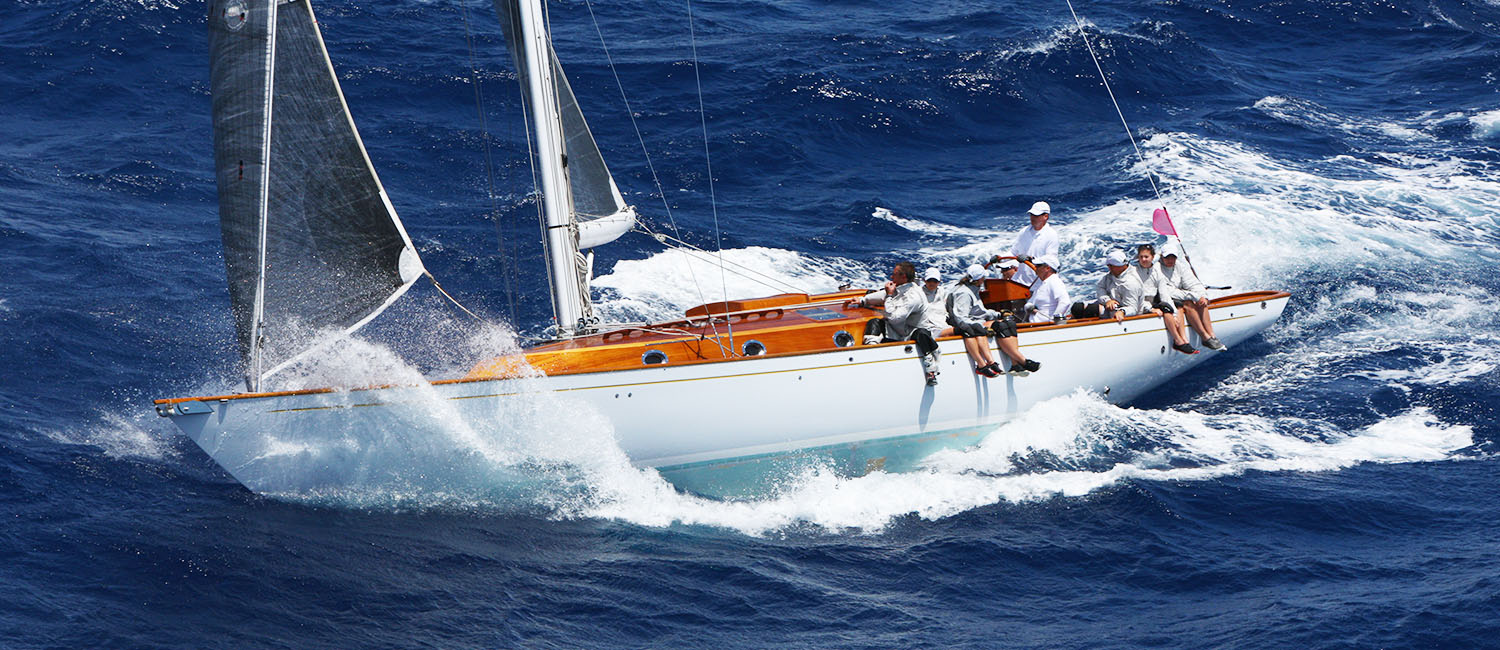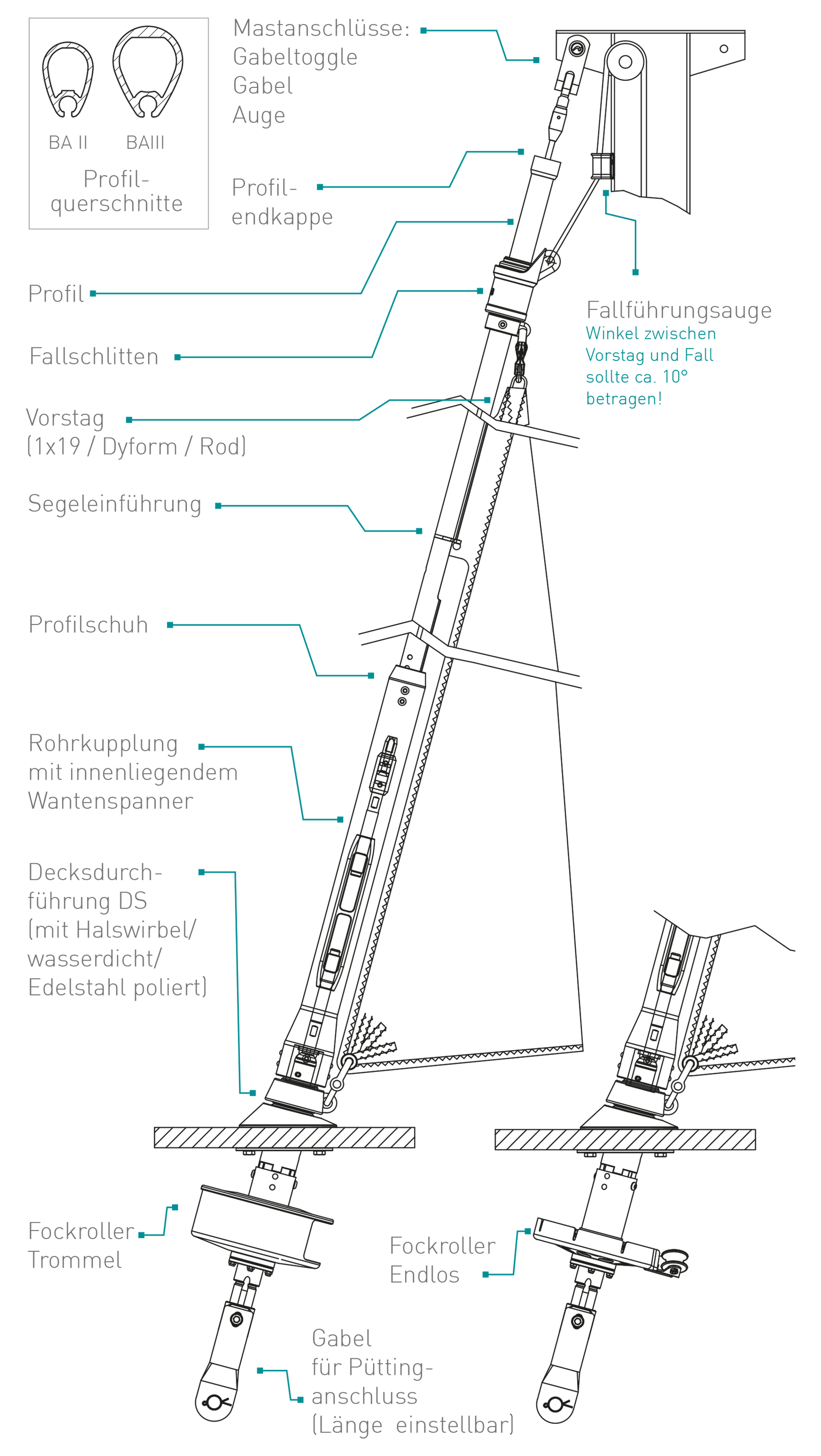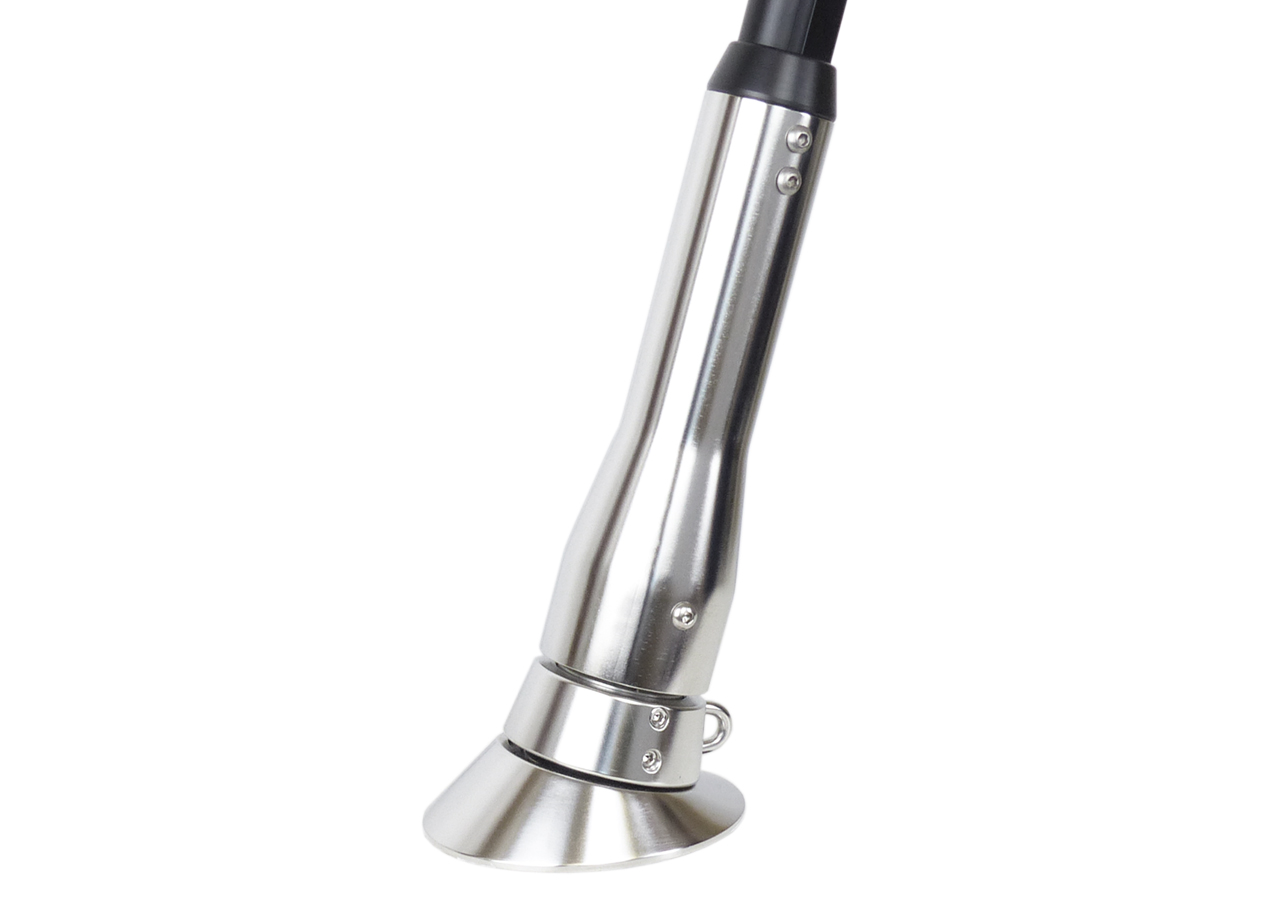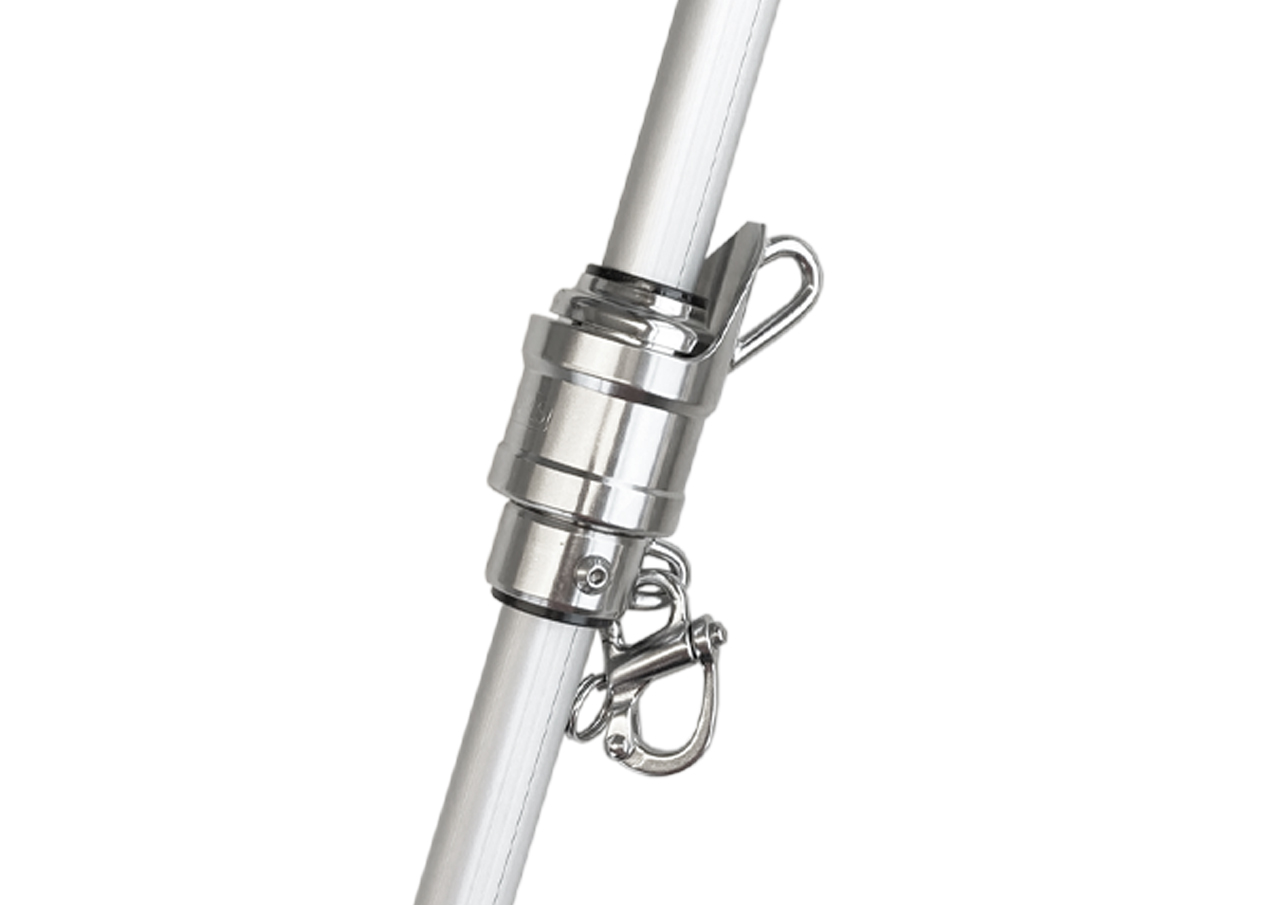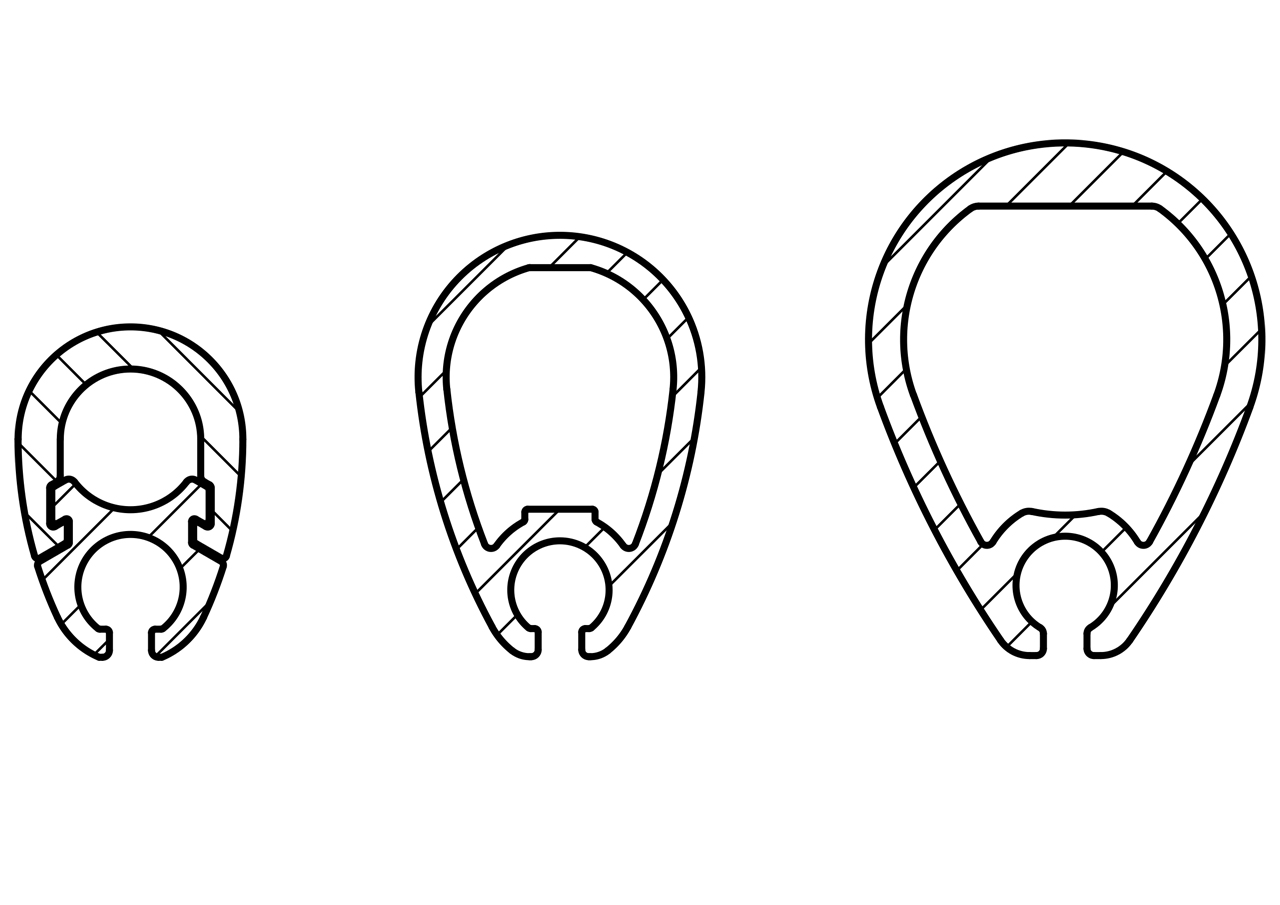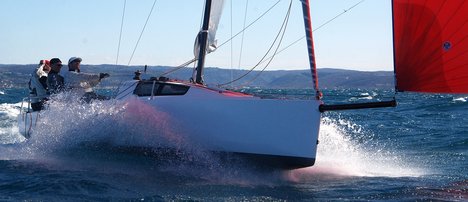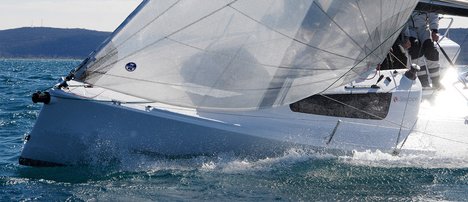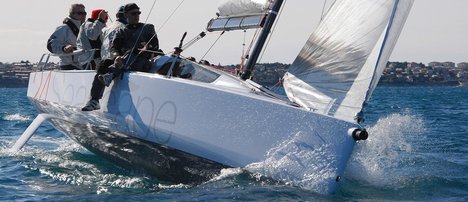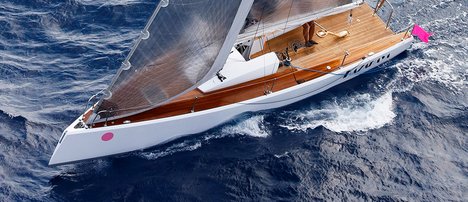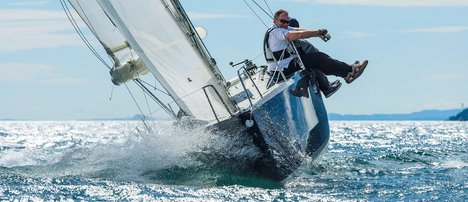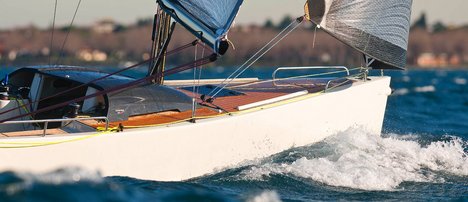Für die Verbindung zwischen Stagwirbel und Mast stehen Laschen, Gabeln und T-Togglen zur Auswahl. Der Wirbel muss sich frei in Zugrichtung des Vorstages einstellen können, ohne das er am Mast streift oder das Fall beeinträchtigt wird.
D2 systems
Reefing systems with profiled forestay
Standing stay
Endless line or drum furler
Mounting below deck
Reefing system with profiled forestay (mounted below deck)
The reefing systems with deck lead-through DS are used in manual versions on ships from 35 to 50 feet and in electric and hydraulic versions on ships up to 100 feet. The forestay remains fixed and the forestay forces are transmitted directly from the mast fitting to the jib. When reefing, the profile rotates around the forestay. All components visible on deck are characterised by particularly compact and elegant shapes, and all stainless steel visible surfaces are polished. Plastic is avoided as far as possible. The deck lead-through offers an alignment compensation of +/- 5° for installation. The forestay connection, including tube coupling and profile, enables an angle compensation of +/- 10° during sailing and thus compensates for changes in the mast drop and the sag of the forestay. The integrated tack swivel ensures that the sail tack is positioned as low as possible above deck. While sailing, the sail neck is optimally aligned with the sail position. The freewheel of the drive clutch allows the forestay profile to align itself freely depending on the sail position. The forestay can be attached directly or via a shroud tensioner (with short or long tube coupling). The shroud tensioner is fully integrated into the tube coupling, which considerably simplifies rigging and adjustment of the mast drop.
Advantages:
- The appearance of classic yachts is largely retained (slim stainless steel design)
- Lowest possible attachment point of the sail neck (above the tack)
- Tensile forces of the forestay do not act on the bearings, but are transmitted directly to the jib via the axle
- The deck grommet with spherical cap compensates for misalignment during installation
- Forestay connection with angled ball terminal
- Integrated tack swivel for optimum sail position
- Can be converted to electric or hydraulic drive
D2 below deck Variants / Electric drive
Deck feed-through DS
The BARTELS DS deck bushing is an ultra-modern, angularly movable and watertight solution, specially developed for standing stay systems. The elegant stainless steel body impresses with its high-quality appearance and outstanding stability, while a robust shaft is guided safely through the deck. The drive unit is discreetly integrated below deck so that the overall appearance of the yacht remains harmonious.
The drive can be configured flexibly - either with a drum roller, an endless line roller or a modern electric drive. Powerful hydraulic drives are also available on request, which are ideal for individual requirements.
With the DS deck bushing, BARTELS combines the highest technical standards with innovative design. Rely on our expertise for a solution that optimally combines functionality, safety and aesthetics and meets your requirements for modern stowage systems.
halyard swivel for profile forestay
Halyard swivels are used in furling and reefing systems when the halyard of the headsail is to be guided in the mast. They prevent the halyard from wrapping around the forestay when the sail is furled by decoupling the rotation of the halyard. Halyard swivels slide over a profile insert on the forestay profile that is adapted to the profile geometry. The rotary movement of the profile is transferred to the attachment point of the sail head, whereby the sail is furled parallel to the forestay at the neck and head, preventing the sail from billowing in the head area.
BARTELS profile forestages
BARTELS profile forestays are made from high-quality aluminium profile segments that are joined together to form a stable forestay profile and installed around the forestay wire. The wire runs inside the profile and forms the central axis for the furling and reefing process. In D1 systems, the forestay wire rotates together with the extrusion, whereas in D2 systems the wire remains fixed and only the extrusion rotates. The sail is guided in the single, specially developed keder groove via a leech tape.
BARTELS forestay profiles are available in three sizes and are characterised by their unique design with only one keder groove - a concept that makes it much easier to change sails, as two keder grooves would prevent the halyard swivels from passing through. This solution was chosen over 40 years ago in order to optimise the aerodynamic shape and ensure an almost vortex-free flow of the sail. Our forestay profiles therefore guarantee a smooth furling and reefing process that also fulfils high performance requirements.

